Danilo Matoso Macedo
Elcio Gomes da Silva
– ago. 2012 –
Download
Resumo
This paper`s aim is to reveal, through the analysis of primary archival sources, the representational core of a conceptual change in the work of Brazilian modern architect Oscar Niemeyer. His work can be divided in two main periods, separated by his designs for Brasília (1957). The first one is characterized by a diversity of materials, shapes, and more attention to the details, articulated mostly in open plans. The second one, as Niemeyer himself states, by a search for “conciseness and purity”, with interest in “compact solutions, simple and geometric: problems of hierarchy and of architectonic character; the fitness of unity and harmony amongst the buildings and, further, that these no longer [would be] expressed through their secondary elements, but rather through the structure itself, duly integrated within the original plastic conception”. In 1956, Giedion considered that Brazilian architects were able to “tackle the varied problems of a complex program and to come forward with a concise and simple ground plan and with clear and intelligent sections”. Niemeyer would, in fact, bring this synthetic strategy to a new level, in which simple, schematic drawings would also play a role in defining what elements would be considered the architect’s work. A concise form would be the consequence of a concise graphic representation, standing only for architectural principles that, to the author, would be essential in the building. Graphic simplification can thus mean prevalence of plastic form, but on the other hand a more abstract design strategy that can be also interpreted as a pure representation of classical principles – such as rhythm, symmetry and proportion – which can be conveyed by several forms. This twofold concept is here analyzed in some original architectural drawings of the Palace of Congress, in Brasília, designed by Niemeyer in 1957 – the turning point in Niemeyer’s career. The research is focused on the structural order, on the way it is expressed in secondary elements, and on its relation to the original drawings and to the level of detailing then reached. Some elements reveal us the subtle shifts between strict formalism and open design: elliptical pillars represented as rectangles; window mullions, cladding and flooring set in a non-modular, adaptive way, amongst others. Which of these elements survived? Which of them established an open pattern for change? The study of the drawings, of the design process and of the building itself raises issues – dealing with geometry, hierarchy, character, unity, harmony and structural order – in an open way that is fundamental to its preservation.
Publicação original
Macedo, Danilo Matoso, e Elcio Gomes da Silva. “From Open Plan to Open Design: Architectural Principles in Niemeyer’s Palace of Congress”. In Proceedings of the 12th International Docomomo Conference: The Survival of Modern From Cofee Cup to Plan, por Timo Tuomi, Tommi Lindth, Miia Perkkiö, e Jenni Sahramaa, 99–107. [Porvoo]: Docomomo Finland [Bookwell Oy], 2013.


